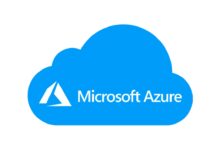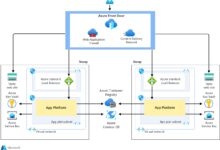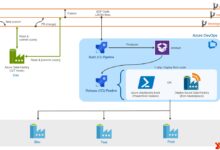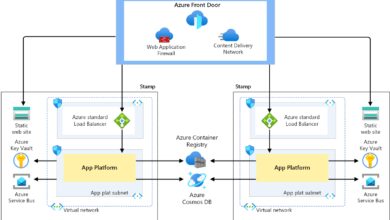Azure Apps: 7 Powerful Benefits You Can’t Ignore
Welcome to the world of Azure apps—where cloud innovation meets real-world application. Whether you’re a developer, IT manager, or business leader, understanding how Azure apps can transform your digital strategy is essential in today’s fast-evolving tech landscape.
What Are Azure Apps and Why They Matter

Azure apps refer to applications built, deployed, and managed using Microsoft Azure’s cloud computing platform. These apps can range from simple web applications to complex enterprise-grade systems that leverage AI, IoT, and serverless architectures. With over 200 services available on Azure, developers have unparalleled flexibility in creating scalable, secure, and intelligent applications.
Defining Azure Apps in Modern Cloud Computing
Azure apps are not just hosted on the cloud—they’re designed for the cloud. Unlike traditional applications that are migrated (lifted and shifted) to cloud environments, true Azure apps are cloud-native. This means they are built using microservices, containers, and DevOps practices from the ground up.
- Cloud-native design enables resilience and scalability.
- They use managed services like Azure App Service, Functions, and Kubernetes.
- Integration with Azure DevOps streamlines CI/CD pipelines.
This architectural shift allows organizations to respond faster to market changes and deliver better user experiences. According to Microsoft, over 95% of Fortune 500 companies use Azure for some form of digital transformation.
Key Components of Azure App Ecosystem
The strength of Azure apps lies in their integration with a broad ecosystem of tools and services. From identity management to AI capabilities, Azure provides everything needed to build full-featured applications.
- Azure App Service: A fully managed platform for building web, mobile, and API apps.
- Azure Functions: Serverless compute for event-driven workloads.
- Azure Kubernetes Service (AKS): For containerized applications requiring orchestration.
- Azure Logic Apps: Automate workflows without writing code.
- Azure API Management: Secure and publish APIs at scale.
These components allow developers to mix and match services based on application needs, reducing time-to-market and operational overhead.
“Azure apps are not just about hosting software—they represent a new way of thinking about application development, deployment, and evolution.” — Microsoft Azure Documentation
Top 7 Benefits of Using Azure Apps
Organizations adopting Azure apps gain a competitive edge through agility, security, and innovation. Let’s explore the seven most impactful benefits that make Azure apps a top choice for modern enterprises.
1. Scalability That Grows With Your Business
One of the standout features of Azure apps is their ability to scale automatically based on demand. Whether you’re handling a sudden spike in traffic or planning for long-term growth, Azure’s infrastructure adapts seamlessly.
- Auto-scaling rules can be set based on CPU usage, memory, or custom metrics.
- Apps can scale out (add more instances) or scale up (increase instance size).
- Global scale is possible with Azure’s presence in 60+ regions worldwide.
For example, during Black Friday sales, an e-commerce app hosted on Azure App Service can scale from 10 to 1,000 instances within minutes, then scale back down when traffic normalizes—saving costs while maintaining performance.
2. Enhanced Security and Compliance
Security is baked into every layer of Azure apps. Microsoft invests over $1 billion annually in cybersecurity and employs more than 3,500 security experts to protect its cloud infrastructure.
- Azure apps benefit from built-in DDoS protection, network security groups, and encryption at rest and in transit.
- Compliance certifications include GDPR, HIPAA, ISO 27001, SOC 1/2, and more.
- Integration with Azure Active Directory (AAD) enables secure identity and access management.
For regulated industries like healthcare and finance, this level of compliance assurance is invaluable. You can deploy Azure apps knowing they meet stringent data protection standards.
3. Cost Efficiency and Pay-as-You-Go Pricing
Unlike traditional on-premises infrastructure, Azure apps operate on a consumption-based model. You only pay for what you use, which can lead to significant cost savings.
- No upfront hardware costs or long-term contracts.
- Reserved instances offer up to 72% discount for predictable workloads.
- Free tier and credits available for startups and students via Azure Free Account.
Tools like Azure Cost Management help track spending and optimize resource usage. For instance, shutting down non-production environments at night can reduce costs by 60%.
4. Seamless Integration With Microsoft 365 and Other Services
Azure apps integrate effortlessly with Microsoft 365, Dynamics 365, Power Platform, and other enterprise tools. This synergy enhances productivity and enables richer business applications.
- Build custom apps that pull data from Outlook, Teams, or SharePoint.
- Use Power Automate to trigger Azure Logic Apps workflows.
- Embed Power BI dashboards directly into Azure-hosted portals.
This integration is especially powerful for organizations already using Microsoft ecosystems. It reduces friction in digital transformation initiatives and accelerates innovation.
5. Global Reach and High Availability
Azure operates in 60+ geographic regions—more than any other cloud provider. This global footprint allows Azure apps to deliver low-latency experiences to users worldwide.
- Deploy apps close to end-users for faster response times.
- Use Azure Traffic Manager to route users to the nearest healthy endpoint.
- Leverage Azure CDN for content delivery at scale.
High availability is ensured through redundancy across availability zones and regions. For example, if one data center goes offline, traffic is automatically rerouted to another, minimizing downtime.
6. Support for Hybrid and Multi-Cloud Deployments
Not all organizations are ready to go fully cloud-native. Azure apps support hybrid models where workloads run both on-premises and in the cloud.
- Azure Arc enables management of servers and Kubernetes clusters anywhere.
- Azure Stack allows running Azure services in on-premises data centers.
- Disaster recovery with Azure Site Recovery protects on-prem apps.
This flexibility is crucial for industries with legacy systems or data residency requirements. It allows a gradual transition to the cloud without disruption.
7. Innovation Through AI and Machine Learning
Azure apps can integrate AI capabilities without requiring deep expertise in data science. Pre-built APIs and cognitive services make it easy to add intelligence to applications.
- Use Azure Cognitive Services for vision, speech, language, and decision-making APIs.
- Train custom ML models with Azure Machine Learning.
- Deploy AI-powered chatbots using Azure Bot Service.
For example, a customer support app can use natural language processing to understand user queries and route them to the right agent—or resolve them automatically.
How to Build Your First Azure App
Getting started with Azure apps doesn’t require years of experience. With the right tools and guidance, you can deploy your first application in under an hour.
Step 1: Set Up Your Azure Account
The first step is creating an Azure account. Microsoft offers a free tier with $200 in credits for 30 days and access to over 25 always-free services.
- Visit azure.microsoft.com and sign up.
- Verify your identity with a phone number and credit card (no charges unless you upgrade).
- Access the Azure portal at portal.azure.com.
Once logged in, you’ll see a dashboard where you can create and manage resources.
Step 2: Choose the Right Azure App Service
Azure offers multiple app hosting options depending on your needs:
- Web App: Ideal for websites and web APIs.
- Mobile App: Backend for mobile apps with offline sync and push notifications.
- API App: Host RESTful APIs with built-in Swagger support.
- Function App: Run code in response to events (serverless).
For beginners, starting with a Web App is recommended due to its simplicity and rich documentation.
Step 3: Deploy Your Application
Deployment can be done through various methods including Git, FTP, Azure DevOps, or even directly from Visual Studio.
- Create a new Web App in the Azure portal.
- Configure runtime stack (e.g., .NET, Node.js, Python).
- Deploy code using GitHub Actions or local Git.
Azure automatically handles scaling, patching, and load balancing. You can monitor performance using Application Insights.
Common Use Cases for Azure Apps
Azure apps are being used across industries to solve real business challenges. Here are some of the most common and impactful use cases.
E-Commerce Platforms
Online retailers use Azure apps to handle high traffic, personalize user experiences, and manage inventory in real time.
- Scalable web frontends using Azure App Service.
- Backend order processing with Azure Functions.
- AI-driven product recommendations using Azure Cognitive Search.
Companies like ASOS and BMW use Azure to power their digital storefronts.
Enterprise Resource Planning (ERP) Systems
Modern ERP systems are moving to the cloud. Azure apps enable secure, scalable backends for finance, HR, and supply chain management.
- Host SAP or Dynamics 365 on Azure virtual machines or managed instances.
- Integrate with Power BI for real-time analytics.
- Automate workflows using Azure Logic Apps.
This reduces IT overhead and improves data visibility across departments.
Healthcare Applications
In healthcare, Azure apps are used for patient portals, telemedicine platforms, and medical data analysis.
- Secure storage of PHI (Protected Health Information) with HIPAA-compliant services.
- AI-powered diagnostics using Azure Health Bot and FHIR servers.
- Remote monitoring via IoT devices connected to Azure IoT Hub.
Organizations like Mayo Clinic leverage Azure to improve patient outcomes and operational efficiency.
Azure Apps vs. AWS vs. Google Cloud: A Comparison
While AWS was first to market, Azure has rapidly gained ground—especially among enterprises already using Microsoft products. Let’s compare Azure apps with AWS and Google Cloud Platform (GCP).
Market Share and Enterprise Adoption
According to Synergy Research Group (2023), AWS leads with 32% market share, followed by Microsoft Azure at 23%, and Google Cloud at 10%.
- Azure excels in hybrid cloud and enterprise integration.
- AWS has the broadest service catalog but steeper learning curve.
- GCP leads in data analytics and AI/ML innovation.
However, Azure’s tight integration with Windows Server, Active Directory, and Office 365 gives it a strong edge in corporate environments.
Developer Experience and Tools
Azure provides a seamless experience for developers using Visual Studio, .NET, and GitHub (owned by Microsoft).
- Azure DevOps offers end-to-end CI/CD pipelines.
- GitHub Actions integrates natively with Azure.
- Visual Studio Code has excellent Azure extensions.
In contrast, AWS relies more on third-party tools, while GCP integrates well with open-source ecosystems like Kubernetes and TensorFlow.
Pricing and Total Cost of Ownership
Pricing models differ significantly:
- Azure uses a per-minute billing model (vs. AWS’s per-second after first minute).
- Azure Hybrid Benefit allows using existing Windows Server licenses for up to 40% savings.
- Google Cloud offers sustained use discounts automatically.
For organizations with existing Microsoft licenses, Azure often provides the lowest TCO.
Best Practices for Managing Azure Apps
Building an Azure app is just the beginning. To ensure long-term success, follow these best practices for management, security, and optimization.
Implement Infrastructure as Code (IaC)
Use tools like Azure Resource Manager (ARM) templates or Terraform to define your infrastructure in code.
- Ensures consistency across environments (dev, test, prod).
- Enables version control and rollback capabilities.
- Reduces human error in manual configurations.
This practice is foundational for DevOps and cloud governance.
Monitor Performance with Azure Monitor
Azure Monitor collects telemetry from apps, infrastructure, and logs to provide deep insights.
- Set up alerts for CPU, memory, or response time thresholds.
- Use Log Analytics to query and visualize data.
- Integrate with Application Insights for code-level diagnostics.
Proactive monitoring helps identify issues before users are affected.
Secure Your Apps with Zero Trust Principles
Adopt a zero-trust security model where no user or device is trusted by default.
- Enable multi-factor authentication (MFA) via Azure AD.
- Use network security groups to restrict traffic.
- Apply role-based access control (RBAC) to limit permissions.
Microsoft reports that organizations using zero trust reduce breach risk by up to 80%.
Future Trends in Azure Apps Development
The landscape of Azure apps is evolving rapidly. Emerging technologies and shifting user expectations are shaping the next generation of cloud applications.
Rise of Serverless and Event-Driven Architectures
Serverless computing with Azure Functions and Logic Apps is gaining traction due to its cost efficiency and scalability.
- No need to manage servers—focus on code.
- Pay only when functions execute.
- Ideal for microservices and backend APIs.
According to a 2023 survey by O’Reilly, 45% of cloud developers now use serverless architectures regularly.
Edge Computing with Azure IoT Edge
As latency-sensitive applications grow (e.g., autonomous vehicles, smart factories), processing data closer to the source becomes critical.
- Azure IoT Edge allows running Azure services on edge devices.
- Process data locally, then send insights to the cloud.
- Reduces bandwidth usage and improves response times.
This trend is especially relevant in manufacturing, healthcare, and transportation sectors.
AI-Powered Development with GitHub Copilot and Azure AI
Artificial intelligence is now assisting developers in writing code. GitHub Copilot, powered by Azure AI, suggests code snippets in real time.
- Speeds up development and reduces boilerplate coding.
- Integrates with Visual Studio and VS Code.
- Learns from public repositories to provide context-aware suggestions.
This marks a shift toward augmented development, where humans and AI collaborate to build better Azure apps faster.
Real-World Success Stories of Azure Apps
Many global organizations have transformed their operations using Azure apps. Here are three inspiring examples.
BMW: Digital Transformation in Automotive
BMW uses Azure apps to power its connected car platform, processing data from millions of vehicles worldwide.
- Collects telemetry data via Azure IoT Hub.
- Uses Azure Machine Learning to predict maintenance needs.
- Delivers personalized driver experiences through mobile apps.
This has improved customer satisfaction and reduced service costs.
ASOS: Scaling E-Commerce During Peak Seasons
ASOS, a leading online fashion retailer, relies on Azure apps to handle massive traffic spikes during sales events.
- Uses Azure App Service and AKS for scalable frontends.
- Leverages Azure CDN for fast image delivery.
- Monitors performance with Application Insights.
During Black Friday, ASOS handled over 1 million requests per minute with zero downtime.
Mayo Clinic: Advancing Healthcare with AI
Mayo Clinic uses Azure apps to accelerate medical research and improve patient care.
- Runs AI models on Azure to analyze medical images.
- Uses Azure Health Data Services for FHIR-compliant data storage.
- Enables secure telehealth consultations via Azure Communication Services.
These innovations have reduced diagnosis times and expanded access to care.
What are Azure apps used for?
Azure apps are used to build, deploy, and manage cloud-based applications such as web apps, mobile backends, APIs, serverless functions, and enterprise systems. They are commonly used in e-commerce, healthcare, finance, and IoT.
How much does it cost to run an Azure app?
Costs vary based on usage. Azure offers a free tier with $200 credit for 30 days. After that, pricing depends on services used—e.g., App Service starts at ~$13/month. You only pay for what you consume.
Can I migrate my existing app to Azure?
Yes. Azure supports migration of on-premises or legacy apps via tools like Azure Migrate, which assesses, replicates, and moves applications with minimal downtime.
Is Azure better than AWS for app development?
It depends on your needs. Azure is often preferred by enterprises using Microsoft products due to seamless integration. AWS has more services, but Azure offers superior hybrid cloud support and developer tools for .NET and Windows environments.
Do I need to know coding to create Azure apps?
Basic coding knowledge helps, but Azure also offers low-code/no-code platforms like Power Apps and Logic Apps for building apps without writing code.
In conclusion, Azure apps represent a powerful, flexible, and secure way to build modern applications. From startups to Fortune 500 companies, organizations are leveraging Azure’s global infrastructure, AI capabilities, and seamless integration to drive innovation. Whether you’re deploying a simple website or a complex AI-driven system, Azure provides the tools and scalability needed to succeed. By following best practices in security, monitoring, and architecture, you can ensure your Azure apps deliver maximum value. As cloud technology continues to evolve, staying updated with trends like serverless computing, edge processing, and AI-assisted development will keep you ahead of the curve. The future of application development is in the cloud—and Azure apps are leading the way.
Further Reading:









